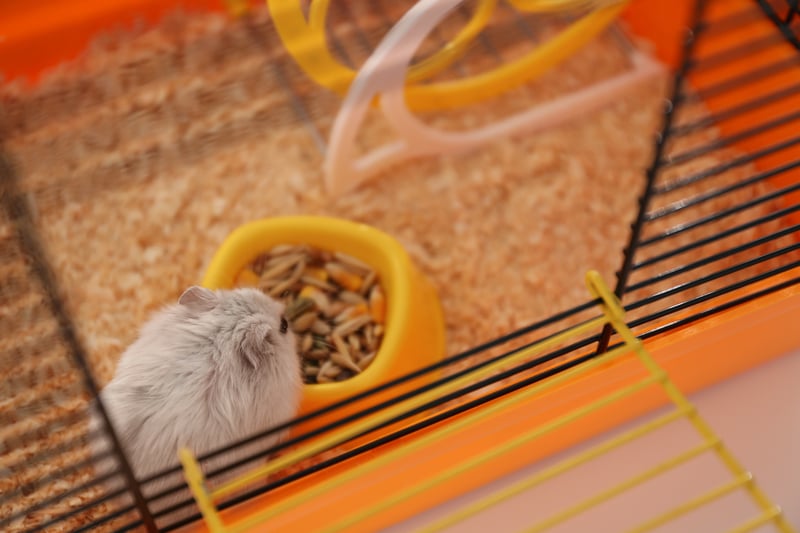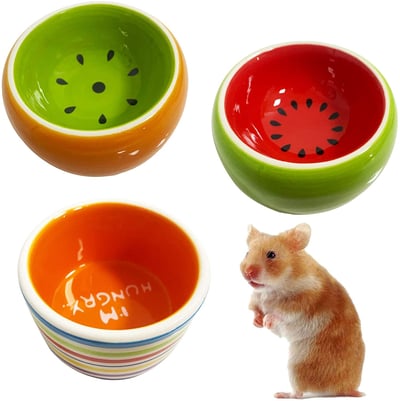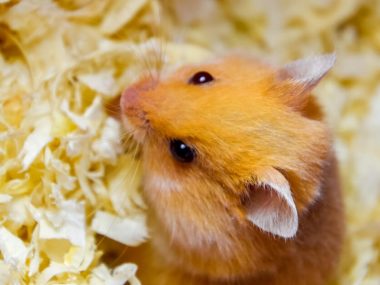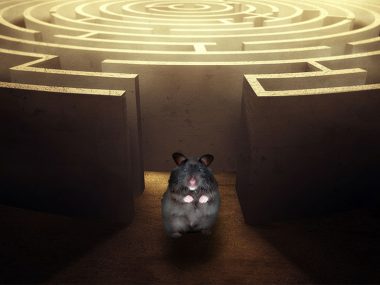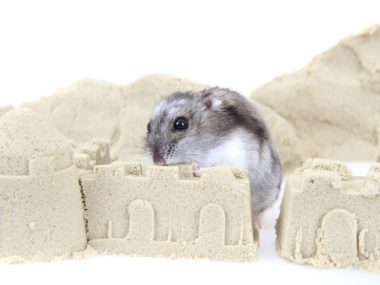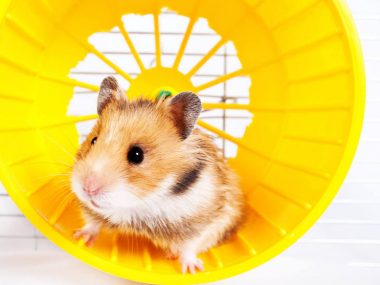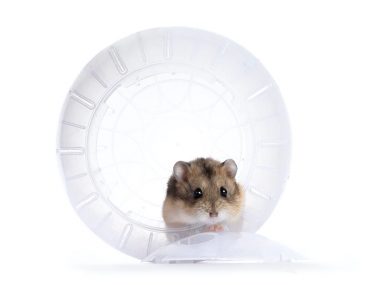Would you believe us if we told you that a hamster bowl might cause illness, injury, and even death? We have some valuable insight that’s eye-opening. When you go to select a hamster food bowl, you will think twice about some of them out there on the market!
Disclaimer: This post may contain affiliate links. If you buy something through these links, we may earn a commission at no extra cost to you. Thank you!
Table of Contents
A Bowl Is A Bowl; Right?
Does it really matter what kind of bowl you put hamster food in? There are all kinds of hamster bowls sold by the pet industry and DIYer’s. Various materials, shapes, colors, sizes, and features are what attract hamster parents to buy.
Do Hamsters Need A Food Bowl?
Many new hamster parents may not be aware of just how important a hamster bowl is to have in their cage. Two must-have components in a hamster cage include a dedicated bowl for hamster food and one as a water bowl (or water bottle.) And if you are new to raising hamsters, you’re probably wondering, “What can I use as a hamster bowl?” Let’s look at a few options.
How To Select A Hamster Food Bowl
Need a little help in finding the perfect food bowl for your little fella? We cover just about everything you need to know to help you make a well-informed purchase decision.
Things To Consider
Before getting online or loading up in the car to head to your local pet store, there are a few things to consider when it comes to hamster bowls.
Bowl Weight
Any pet can easily knock a bowl over, causing food or water to spill everywhere. The pet supply industry understands this issue by making weighted bowls to prevent spillage. The last thing you want in your hamster cage is wet bedding from a bowl being knocked over.
Hamsters naturally forage for food, and that foraging behavior won’t stop them from attempting to lift a bowl to check out what’s underneath it.
The Size Of Your Hamster
Dwarf hamsters are much smaller than Syrians, so selecting a smaller, shallow bowl is best. Certain hamster species require more food and water than their counterparts. Dr. Susan Brown (Veterinarian) mentions in her article on hamster care that the average hamster consumes about 12 grams of food within a 24-hour period (most of which is eaten during the night.) So, if you look at 12 grams of hamster pellets, that’s about one tablespoon.
Dimensions Of Bowl
When shopping for a food bowl, keep in mind that you will need a really small bowl. Something that is about 2-3″ in diameter with a lip or sides no more than one inch tall. Most hamster food bowls on the market are much larger than they should be, which causes hamster parents to overfeed their hamsters.
Hamsters are natural-born hoarders, and their bowls full of food can easily be gone within minutes. They quickly stuff pouches in their mouths full of food and then retreat to an area (usually a corner) under their bedding where the food is stored. During the night, they go to this stash of food about every two hours to eat it.
So, if you see an empty bowl, check their cage for food stashes before filling up their food bowl. Never let an empty food bowl fool you!
Quality And Materials Of Bowl
Before selecting a bowl, it’s important to take a look at the good, bad, and ugly with materials used to make the bowl.
Pros And Cons Of Hamster Food Bowls
Plastic
Although plastic food bowls are lightweight, cheap, and come in a lot of color options, they fail to stand up to the incessant chewing and gnawing of a hamster. Plastic food bowls often end up in the trash and fail miserably as a long-lasting hamster food bowl.
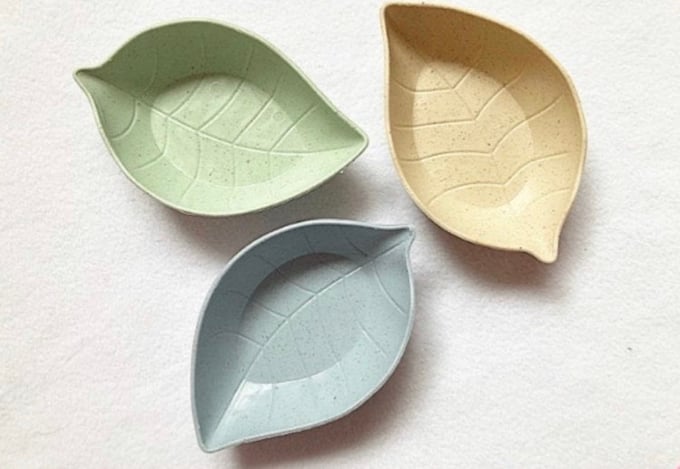
Some cheaper plastic bowls may be porous enough to hide bacteria. When cleaning the bowl, a bleach-soak or hard scrub is necessary.
Silicone
Silicone bowls feature a soft texture and come in numerous colors. However, no matter how you look at it, silicone is definitely a no-go where hamsters are concerned. These soft, rubbery food bowls are easily chewed up and eaten by a hamster.
Silicone is a material well known for its flexible, soft, rubber-like texture. This texture is responsible for retaining a desired shape. Most notably, silicone is used for breast implants, cookware, serveware, fishing lures, and much more.
In a research study entitled “Silicone Toxicology,” hamsters were found to have reacted to numerous compounds in silicone. Ingestion or subjection to this rubber caused hamsters to develop tumors, cancers, impairment of the reproductive system, changes in the liver, and more. Just as plastic, silicone can harbor bacteria making cleaning a chore.
Resin
Resins are a compound in many types of plastic-producing formulas used to create hundreds of things. Creative and talented hamster parents use resin to make their own one-of-a-kind hamster food bowl. These bowls are beautiful, colorful, and fun.
However, resins are a group of materials often marketed as safe for pets; but, the fine print on a bottle of resin often explicitly mentions it is toxic if ingested. A hamster will inevitably chew on a resin food bowl so these little bowls are definitely not the best to have in a hamster cage.
Stainless Steel
These little metal bowls look similar to condiment containers filled with ketchup, mustard, salad dressings, etc., when dining out. Cleaning a metal hamster bowl is a breeze. As far as durability, stainless steel food bowls outlasts many others.
The downside to this type of bowl is they lack the weight needed to keep from tipping or being flipped over by a hamster. When climbing up on the side of the bowl to feed, the hamster has to maneuver up and over an extended flat lip. Rounded lips are much easier to lean over to eat.
Porcelain And Ceramic
Porcelain and ceramic are made from the same materials. What sets them apart is their thickness. Porcelain is thin, whereas ceramic is thick. Porcelain is often associated with delicate teacups and china dishes. A porcelain bowl is beautiful and provides a certain “poshness” to a hamster cage. A heavy-duty chewer will destroy porcelain and can easily crack one. So, it’s best to avoid one of these lovely, delicate bowls.
Ceramic is far more durable and has the weight needed to support a hamster climbing up on one to feed. Cleaning one of these bowls is super easy. The only disadvantage of a ceramic hamster food bowl is it will break if one is accidentally dropped on a hard surface.
Glass
Glass hamster bowl durability depends on the thickness of the glass. Many glass hamster bowls are fairly thick enough for hamsters that aren’t “power chewers.” Clear glass bowls allow you to easily monitor their food level and are easy to clean.
But, if your hamster is a chewer (which most are), there’s always the chance they can bite the bowl and crack it. Far worse, glass shards can cause grave injuries to a hamster.
Wood
Wood hamster bowls provide an organic, minimalistic feature to a hamster cage. The biggest plus of a wood bowl is watching how fast a hamster runs over to one to start chewing. Wood is highly attractive as nothing more than a big chew stick.
Aside from being chewed up, wood hamster bowls are notorious places where feces, urine, mold, and other bacteria get absorbed into the wood fibers. Cleaning and keeping a wood bowl clean and sanitary is very challenging.
Stoneware
Stoneware bowls have an organic, earthy pottery appearance because they are made from clay and undergo firing. Although we advised against using clay bowls, a good-quality stoneware bowl is weighted, durable, round-lipped, and super easy to clean. There is a chance that a hamster can nick the bowl so, if you opt for this type of bowl, keep a close eye on it for cracks or chipping.
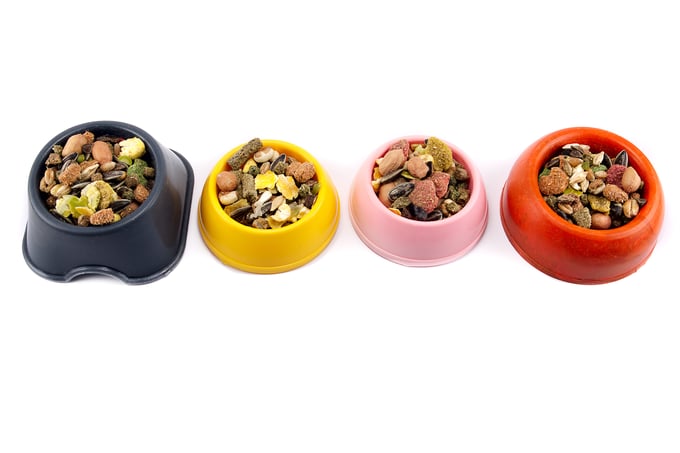
Hamster Bowl Behaviors
Why is my hamster biting the food bowl?
Hamsters instinctively chew on anything they can get their teeth on. Chewing keeps their teeth from becoming overgrown (too long.)
Why does my hamster flip his food bowl?
Hamsters forage for food up and under bushes, rocks, and other structures in the wild. A bowl is simply a structure to get up and under to seek out food. This is why having a weighted bowl is a must.
Why does my hamster sleep in his food bowl?
Hamsters see a food bowl as a tight, cuddly place to snuggle up in. In the wild, they carry food down into their burrows to feed on. Some areas in the burrows where the food is stored may also serve as sleeping quarters. If you notice your hamster sleeping in their food dish, they can easily urinate and defecate on their food. If this occurs, simply refresh the food.
Your Hamster, Food, And Vacay Time
Many hamster parents are opting for an automatic food dispenser. Although these provide a continual source of food if you are away for short periods, be mindful that a hamster will attempt to chew on one. So, be sure to get one that’s durable!
An automatic food dispenser or multiple bowls of food should never compensate for our absence when away on vacation or out of town. There’s always the chance that something could go wrong with a dispenser, or the food becomes soiled from feces or urine, making it inedible. Hiring someone to check in or take care of your hamster is the best option.
What Can I Feed My Hamster If I Run Out Of Food?
Never substitute hamster pellets with “people” food. If necessary, run to your local pet store to pick some up or have it delivered. Inclement weather and other circumstances may prevent you from doing so, and in cases like this, do the best you can to feed them from a list of recommended foods.
A Bowl Isn’t Just A Bowl
Now you have plenty of things to think about and tips for selecting the best hamster food bowl. A food bowl is a key component of your hamster’s digs. Be sure that it’s a good one!
